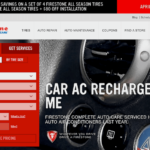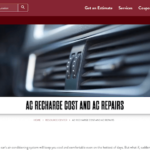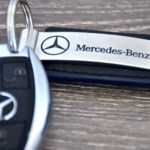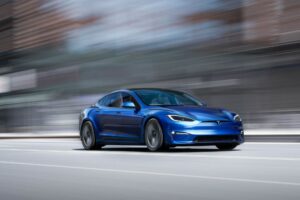Are you in the market for a reliable, economical, and practical car? If your answer is yes, you cannot go wrong with a Saab. Now the question is, are Saabs good cars?
Although the original company no longer produces cars, you can still find many Saab automobiles on the secondhand market. Saabs are famous for providing good performance, comfort, and reliability. These cars have excellent fuel economy and solid build. Also, top consumer reports state that these cars do not have that many serious issues.
Read on to learn more about Saab cars, the company history, and where you can buy them now.
Are Saabs Good Cars?

Despite not being in production anymore, you can still find many Saab cars in the secondhand market today. Now, should you invest in any of them? Are these cars good enough, or are they money pits?
Saab cars gained recognition for their reliability, build quality, and ride comfort. These cars also have excellent gas mileage. According to most Saab owners, their cars do not have many serious issues. Top consumer reports confirm those claims.
However, one caveat is that if the car does need repairs, sourcing for the required parts can be quite difficult.
Are Saabs Still Made Today?
Unfortunately, Saab cars are no longer in production, and it has been that way for more than a decade. We will be discussing this sad story later.
So, are Saabs good?
Yes, they are. However, they are not perfect, and they have some issues. In addition, the Saab brand has suffered quite a hit to its reputation after GM acquired its rights. This also happened after they essentially mismanaged its marketing.
Most Reliable Saabs
The Saab brand has been around for quite a while. The brand hit peak popularity during the late 80s and throughout the 90s. Suffice to say, Saab has been around for quite a while. During its production run, it amassed an excellent reputation.
Although you cannot avoid getting a couple of bad reviews, the customer experience with Saab cars is positive overall. Most Saab owners only have good things to say about their cars.
If you are interested in getting one, here are some of the Saab models that you should look into:
1. 9-3 Viggen
The first generation Viggen came out during the late 90s and the second generation in 2013. GM built the 2nd-gen Saab 9-3 to compete specifically with BMWs.
This resulted in a beautiful luxury car that is also quite quick when needed. It has a 0-60 time of just six seconds, which is impressive for a luxury sedan.
2. 9-2X Aero
Budget-friendly Alternative
The 9-2X is a budget-friendly alternative to the 9-3 Viggen, but it is more than that. It is essentially a rebranded Subaru Impreza.
First Saab Car with Four-wheel Drive
With that said, the 9-2X is the first Saab car to have four-wheel drive. It is also quite a sporty little car. It has a nice tuner car look and excellent ride quality. Moreover, it is quick off the block.
However, you can tell that when making these cars, Saab had to cut a few corners. This is to shave a couple of hundred dollars off the retail price.
Two Retail Models
It was also unfortunate that this model came out when the company was in dire financial straits. The car had just two retail models – the 2005 and 2006 versions.
Of the two models, the 2006 model year of the 9-2X Aero had the least complaints, so it had quite a lot of potential. Unfortunately, GM did not market it well enough to stop people from thinking it was just an Impreza knock-off.
3. Sonett III
Came Out During the 1970s
Although this car came out during the 1970s, it has a unique and beautiful design that stuck with Saab lovers. The Sonett II has a curvy look that seems to transcend generations, causing collectors to chase after it.
Handles Well on the Road
Aside from being beautiful, it also handles well on the road. If you can find one that is still in good condition, do not hesitate to get it.
Common Issues with Saab Cars
Just like with other car manufacturers, there are certain areas where Saab does not excel. Among the common issues that Saab owners frequently complain about in their vehicles are the following:
1. Faulty Fuel Level Sensor
In almost all cases, the fuel gauge would suddenly drop while the owner is in the middle of driving. They reported that the fuel gauge would go from full to zero immediately. It ended up either being an issue with the gauge or the sensor.
This does not affect the overall performance of the vehicle. However, seeing the fuel gauge suddenly drop can be quite a nuisance.
2. Suspension Issues
Due to the way the subframe of Saabs is made, the steering mounts tend to wear down relatively quickly. When this happens, whenever the driver turns the wheel sharply, it creates a screeching or popping sound.
Although it might not immediately cause any serious issues, the noises coming from the steering are unsettling.
If you are thinking of getting a Saab, have a mechanic check out the steering column. This is to determine if it is still good to go.
Least Reliable Saabs

Like other car brands, Saab has a couple of model lines that they are not quite proud of. These include the following:
1. Saab 600
Heavy for Its Size
This model is quite old as it was first released in 1980. It also has a pretty bad reputation that followed it through the years. One reason is that the Saab 600 (aka the Saab-Lancia 600) is quite heavy for its size.
Appearance Issue
It also has metallic paint that would start stripping off after a few years. So, if you see a Saab 600 for sale, it may no longer have its original paint.
Terrible Gearbox
The Saab 600 also has overheating issues, and the gearbox was terrible. Shifting from 1st to 2nd can give a good arm and shoulder workout, but just one side at a time.
2. Saab 9-5
Has a Reliable Engine
Mechanically speaking, the Saab 9-5 is a great car. The under chassis is solid, and the engine is reliable. It also handles well, thanks to its front-mounted engine and front-wheel drive. However, the issue with the Saab 9-5 is the interior.
You might notice the age of the car when you check the exterior. If you step inside, though, you will discover what all the hubbub is all about.
Upholstery Deteriorates After Two Years
The upholstery started to deteriorate after just two years; the worst was the popped seams in the seats. The green backlit dashboard is also an eyesore, literally and figuratively. The green backlight is quite ugly. It is also so weak that you would struggle reading the gauges at night.
History of Saab
Started as an Aircraft Producing Company
Before the people at Saab were pumping out budget-friendly cars, they were an aircraft producing company. Therefore, you can safely assume that their quality control is tight.
They know they have to test every aeronautical component they put out rigorously. There is no room for mistakes if your components are on an airplane.
Svenska Aeroplan Aktiebolaget or the Swedish Airplane Company
In 1937, the Svenska Aeroplan Aktiebolaget, or the Swedish Airplane Company, started the business. However, by the end of World War II, the people at SAAB experienced trouble getting their products out to market.
High Demand for Automobiles After War
They knew that this new market needed a new product after the war. The reason was that the demand for automobiles rose sharply after the war.
Again, are Saabs good cars? Saabs are popular for their excellent fuel economy, comfort, quality, solid build, and great on-the-road performance. Also, customers only have a few issues with this brand.
The First Saab Cars
1. Saab 92
In 1944, right before the end of World War II, Saab started work on Project 92. This is otherwise known as the production of the first Saab automobile.
Impressive Design and Drag Coefficient
Despite being the company’s first attempt, The Saab 92 had an exciting design feature. It had a very impressive drag coefficient of 0.31, a number that many modern cars still fail to achieve.
This happens when you put a team of airplane designers together to develop a car design.
2. Saab 93
Improved 3-cylinder Engine
In 1955, Saab manufactured Saab 93. This newer model has an improved 3-cylinder engine.
First Saab to Sport the Trapezoidal Front Grille
Saab 93 is also the first Saab to sport the trapezoidal front grille, the carmaker’s trademark. Later, in 1959, the wagon version of the Saab 93 would come out.
3. Saab 99
Has a Turbocharger and a Bigger Engine
In 1960, Saab started going forward to bigger and better things, which they proved when they released the Saab 99. The Saab 99 had a bigger engine than its predecessors, and it also had a turbocharger.
The turbocharger will become a staple on later Saab models. Before the decade ended, the Swedish automaker had produced 1 million cars.
4. Saab 9000
Created in Partnership with Fiat
By the end of the 1970s, Saab needed to develop a new platform. This is because they believed that their current one is quite outdated. As a result, Saab signed a partnership with Italian carmaker Fiat, leading to the Saab 9000.
Type 4 Chassis
This new Saab sat on the new Type 4 chassis, which Fiat also used on their Fiat Croma.
Challenges in the 80s and 90s
Sold 50% of Stocks to General Motors
After ten years, in 1987, Saab got into the first of the many financial difficulties that it would get into. The company had to shut down its Arlov plant to downsize its operating costs. In 1990, Saab sold 50% of its stocks to its competitor General Motors to get out of its financial troubles.
Despite that, Saab continued to hemorrhage money. It had to shut down its Malmö to reduce operating costs further.
Managed to Make a Comeback with the Saab 900
Fortunately for Saab, the company would come back with the Saab 900. It was the first that they would produce with GM. 1993 would be the first year since the early 80s that Saab would be back in the black.
General Motors Completely Acquired Saab
Later, General Motors would complete its acquisition of Saab, essentially turning it into a subsidiary brand of the American carmaker.
Released the First GM-owned Saab Model
After a long hiatus, the first GM-owned Saab model would come out in 2003, the updated Saab 9-3. This new model is a sport sedan. It is a departure from the usual four-door hatchbacks that Saab was known for.
The Saab 9-3 was a joint engineering effort as it shared a lot of components with the Opel Vectra.
The End of an Era – Saab Cars Are No More

Unfortunately, Saab cars did not end up nicely after that. The inevitable downfall of Saab was due to many reasons, including the following:
1. Slow Sales
Saab went bankrupt in the early 2000s because of its slow sales. This was when GM became the majority shareholder of Saab. $125,000,000 later, Saab became a subsidiary brand of GM. They started injecting their design concepts into Saab’s original designs.
Lacked Marketing Effort for Saab 9-2X
This resulted in the Saab 9-2X, which was essentially a rebadged Subaru Impreza, and the 9-7x, a rebadged Chevrolet Trailblazer. Unfortunately, General Motors did not do much in terms of marketing Saab, causing the poor sales of the new units.
Many automobile industry experts even referred to these two models as commercial failures. This forced GM to scrap plans for new Saab models. These include the reported hatchback and wagon models set to release the following year.
2. GM and Saab Did Not Agree with Safety Standards
Aside from weak marketing, another problem was brewing in the boardroom. GM executives were pushing for incorporating Vauxhall/Opel designs into the Saab lineup. However, the technology did not satisfy Saab engineers in terms of safety.
GM mandated Saab to take the Opel Vectra and change nothing about it aside from the badge despite protests.
Saab Engineers Defied GM Executives Orders
However, the engineers at Saab defied the orders from corporate and changed almost everything about the Vectra, including safety features. Saab even developed their Navi system. This led to the Saab 9-3.
Although the 9-3 was a great car, its high manufacturing costs led to higher than anticipated price tags. Saab continued to hemorrhage money, and GM was displeased with their turnout.
3. The 07-08 Financial Crash
Another blow to hit the already troubled Swedish carmaker is the 07-08 financial crisis. Just like every other carmaker during that time, GM was hit hard. GM was not able to recoup its losses fast enough. In 2010, it sold all the assets and shares of Saab to the highest bidder.
Spyker Bought Saab in 2010
Dutch supercar manufacturer, Spyker, was the one that bought Saab in 2010. However, it rushed to take back the $400M it spent to acquire Saab. This caused them to push the newest model (Saab 9-5) on the market as fast as possible.
Unfortunately, the 9-5 came out with lower quality than expected because development was rushed. The 9-5 turned out to be yet another commercial flop for Saab.
Spyker realized that the company would not recoup its losses with Saab. They tried to coordinate a deal to sell it to a Chinese company.
GM blocked this deal. The reason is that they did not want their intellectual property in the hands of a Chinese company. This further created an unfair market advantage.
Saab Filed for Bankruptcy in 2011
Eventually, Saab would file for bankruptcy in 2011. Swedish courts then awarded the authority to buy Saab to a Swedish consortium called National Electric Vehicle Sweden in 2012. This is for an undisclosed amount.
Should You Buy a Saab?
The last Saab rolled off the production line more than a decade ago. With that in mind, would you dare to buy a used one?
The once-popular Swedish automobile manufacturer suffered a long and painful death. However, the automotive industry did not even flinch when it happened, which is such a shame.
Saab’s bankruptcy caused the used car prices to plummet. This means you can often get a good deal on a great car.
Buying a Saab is quite practical since Saab cars are among the most reliable cars to ever come out in the market. They are also fun to drive.
Are Saabs Expensive to Fix?
Like most other European car brands, repair costs can be quite expensive. It gets even more expensive if you need a Saab-specific part because they are no longer in production.
With proper care and maintenance, it is common for Saab cars to reach 300k+ miles without major repairs.
Frequently Asked Questions (FAQs)
What Is on Saab’s Logo?
The Saab logo is one of the most recognizable icons in automotive history. The logo consists of a griffin’s head, which came from the coat of arms of the founder, Count von Skane.
What and When Was the Last Saab Made?
The last Saab to roll off the production line was a 2014 9-3 Aero Turbo 4. It was immediately handed over to the Saab Automotive Museum, where it stayed for more than a decade. However, it went on the auction block in 2019 and was sold for $48,200.
Who Owns Saab Now?
National Electric Vehicle Sweden (NEVS), an electric car manufacturer, owns the Saab brand. There were plans to have a fully electric Saab car a couple of years ago. It did not push through, though.
Does Saab Still Exist?
The Saab company still exists today, but it no longer manufactures cars. The company reverted to its original business model, designing and producing commercial- and military-grade aircraft.
Conclusion – Are Saabs Good Cars?
Although Saab no longer makes cars, there are still a lot of them in the secondhand vehicle market these days. Saab cars are famous for having a good balance of comfort, performance, and reliability. They also have excellent fuel economy and quality construction.
In addition, numerous consumer reports state that Saab cars do not have that many mechanical issues. It is also common for these cars to reach more than 300k miles without major repairs. If you are on a tight budget but are for a quality vehicle, consider buying a Saab.
Read next:
Subaru Reliability [Forester, Outback, Crosstrek, WRX, Impreza, CVT]
Ford Reliability – Are Fords Reliable or Not? Top 8 Ford Vehicles
Chevy Cruze Reliability [How Reliable Are They?]
Are Fords Reliable? [Reliability Ratings for 12 Ford Models]









